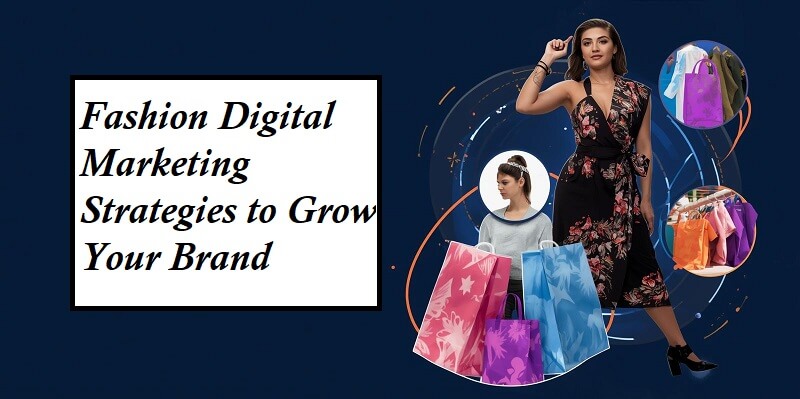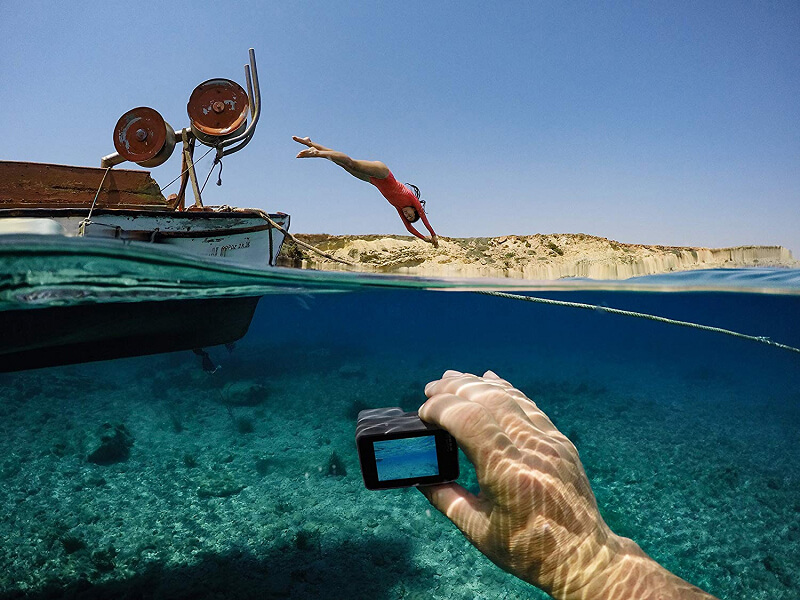
10 Fashion Digital Marketing Strategies to Grow Your Brand in 2025
in Digital Marketing on November 3, 2025From TikTok to virtual try-ons — how fashion brands can own the digital runway in 2025.
Fashion has always been about reinvention — and now, the runway is digital.
Today’s shoppers don’t just buy outfits; they buy experiences, stories, and emotions. They scroll through TikTok before visiting a store, often wondering what does nudge mean on TikTok, check Instagram for outfit inspiration, and expect brands to feel personal and authentic.
In 2025, fashion marketing isn’t about glossy magazines — it’s about AI-driven personalization, storytelling, and visual engagement. This article explores the most effective fashion digital marketing strategies to grow your brand online, drive sales, and build loyalty — including the rising power of video marketing and the importance of creating the best fashion content marketing ecosystem.
Let’s walk the runway of digital transformation — one click at a time.
1. Build a Visually Addictive Website Experience
Your website is your digital flagship store. It must feel like your brand the moment visitors land on it.
1.1 Design for Emotion
Fashion is emotional — your website should be too.
- Use high-quality photography, motion visuals, and immersive layouts.
- Prioritize minimal design, bold typography, and full-screen imagery.
- Create smooth micro-interactions: hover effects, outfit previews, size-guides on hover.
1.2 Mobile-First Is Non-Negotiable
Over 75% of fashion shoppers browse and buy from mobile.
- Optimize for fast load speeds (under 3 seconds).
- Simplify the checkout process (guest checkout, Apple Pay, PayPal).
- Use sticky CTA buttons like “Shop Now” and “Add to Bag.”
1.3 Conversion Features
- Add product videos and 360° spin visuals.
- Include AI-powered recommendations (“Complete the Look”).
- Integrate shoppable lookbooks or UGC sections showing customers wearing your products.
When design and usability meet emotion, conversion rates soar.
2. Master Social Media as a Runway
Social media is the new Fashion Week — but it happens every day.
2.1 Visual Platforms That Matter Most
- Instagram: still the top for curated visuals, Stories, and Reels.
- TikTok: home of virality and brand personality.
- Pinterest: powerful for evergreen inspiration and shopping intent.
- YouTube Shorts: long-form storytelling meets instant style inspiration.
2.2 Social Posting Strategy
- Mix product teasers, styling tutorials, behind-the-scenes footage, and UGC.
- Follow the 70/20/10 rule: 70% educational/entertainment, 20% promotional, 10% personal.
- Create “drops” and countdown campaigns to generate hype.
2.3 Community Engagement
- Reply to comments fast.
- Repost fan photos wearing your designs.
- Encourage branded hashtags (#MyStyleWith[BrandName]).
- Social isn’t just about reach — it’s about relationships.
3. Leverage Influencer and Creator Partnerships
Fashion thrives on social proof. Influencers act as the bridge between your brand and your audience’s trust.
3.1 Micro vs Macro Influencers
- Micro-influencers (5K–50K followers) often have stronger engagement and niche loyalty.
- Macro-influencers & celebrities give brand awareness at scale — but often less authentic engagement.
3.2 Co-Create, Don’t Just Sponsor
Go beyond paid posts. Instead:
- Co-design limited capsule collections.
- Invite influencers to style their favorite pieces and share their “look edit.”
- Film “Day in the Life” videos wearing your brand.
3.3 Data-Driven Influencer Selection
Use influencer analytics platforms (like Modash, Collabstr, or Upfluence) to measure engagement, audience demographics, and fake followers.
Real influence isn’t about follower count — it’s about conversion power.
4. SEO and Content Marketing: Win Google’s Runway
SEO still drives some of the highest-quality traffic for fashion brands — especially for product discovery and trend searches.
4.1 Keyword Strategy
Use long-tail and intent-based keywords:
- “Sustainable fashion brands for women”
- “How to style a white blazer for fall”
- “Best men’s streetwear outfits 2025”
4.2 Blog Content Ideas
To stand out, deliver the best fashion content marketing — not generic filler.
- Trend Reports: “Fall/Winter 2025 Streetwear Trends to Watch.”
- Style Guides: “How to Build a Capsule Wardrobe That Lasts.”
- Behind the Brand Stories: “How Our Sustainable Denim is Made.”
- Celebrity Look Breakdowns: “How to Recreate Zendaya’s Red Carpet Look.”
Each post should inspire and sell — link products directly within blog visuals or text (“Shop the Look”).
4.3 Technical SEO
- Optimize product pages with structured data (price, availability, reviews).
- Use descriptive alt tags for all images.
- Ensure your site has a clean internal link structure between product, blog, and category pages.
Your blog + product pages form the ultimate style discovery engine — a cornerstone of the best fashion content marketing.
5. Fashion Video Marketing: Turn Looks Into Stories 🎥
If a picture is worth a thousand words, a video is worth a thousand clicks.
5.1 Why Video Works in Fashion
Fashion is kinetic — it’s movement, texture, and emotion. Video captures that better than any photo ever could.
- Increases dwell time and engagement.
- Drives more conversions — video shoppers are 1.8x more likely to purchase.
- Builds emotional connection through storytelling.
5.2 Types of Fashion Video Content
- Lookbook Videos: Highlight seasonal collections with cinematic storytelling.
- Behind-the-Scenes Footage: Show the making of garments or creative processes.
- Styling Tutorials: “3 ways to style your white shirt this spring.”
- Runway Recaps: Make fashion shows accessible for global audiences.
- UGC and Try-On Hauls: Collaborate with creators who try your products on camera.
- Short-form Content: Reels, TikToks, and Shorts showcasing “Outfit of the Day” or quick transformations.
5.3 Platforms for Fashion Video Marketing
- YouTube for long-form content and lookbooks.
- TikTok for virality and authenticity.
- Instagram Reels for quick discovery.
- Pinterest Video Pins for evergreen inspiration.
5.4 Pro Tips
- Always shoot in vertical for social-first campaigns.
- Use captions and brand music themes.
- Include product links or QR overlays for easy shopping.
- Repurpose long videos into snippets for ads and reels.
When executed right, fashion video marketing humanizes your brand — turning visuals into desire, and desire into conversions.
6. Email Marketing: The Forgotten Luxury Channel
Social media may drive trends, but email drives sales.
6.1 Build Your List
Offer incentives like:
- 10% off your first order.
- Exclusive early access to new collections.
- Free style guide download.
6.2 Email Campaign Ideas
- New drop alerts: “The Summer Capsule Has Arrived ☀️”
- Restock reminders: “Your favorite jacket is back — in new colors.”
- Seasonal lookbooks: Interactive GIF-based designs.
- Personalized picks: “Because you loved our denim edit.”
6.3 Segmentation & Automation
Send different emails to different audiences:
- Repeat customers → loyalty offers.
- First-time buyers → education + trust building.
- Lapsed customers → comeback coupons.
Email might not be flashy, but it’s the silent moneymaker behind most top fashion brands.
7. Paid Advertising: Target, Test, Tailor
Fashion is visual — and paid ads can turn your visuals into instant reach.
7.1 Meta Ads (Facebook & Instagram)
- Use carousel ads to showcase multiple outfits.
- Retarget abandoned carts and site visitors with personalized creatives.
- Test lifestyle vs product-focused visuals — track CTR and conversions.
7.2 Google Shopping Ads
- Optimize product feeds (titles, descriptions, GTINs).
- Use high-resolution images and competitive pricing.
- Combine Shopping ads with branded search ads to protect your brand name.
7.3 TikTok Spark Ads
Promote organic creator videos as paid ads — authentic, native, and high-performing.
8. Build a Brand Community
Fashion brands that thrive in 2025 don’t just sell clothes — they build communities.
8.1 Brand Values Matter
Consumers want to buy from brands that stand for something.
- Sustainability
- Inclusivity
- Ethical production
- Local craftsmanship
Highlight these values through storytelling and transparency.
8.2 Host Virtual & Physical Events
- Instagram Live styling sessions.
- Virtual runway launches.
- In-store “creator pop-ups.”
- Blend online and offline experiences for deeper emotional resonance.
8.3 Encourage User-Generated Content (UGC)
- Run hashtag challenges (“Show your #WeekendLook”).
- Feature customers on your homepage.
- Offer discount codes for tagged posts.
Community = free marketing with infinite authenticity.
9. Analytics: Style Meets Science
Data is the new couture.
9.1 Track Key Metrics
- Website conversion rate
- Average order value (AOV)
- Return on ad spend (ROAS)
- Email open and click-through rates
- Social engagement rate
- UGC submission volume
9.2 Use Tools That Matter
- Google Analytics 4: for site and conversion tracking.
- Shopify Analytics: for product performance.
- Hotjar: for heatmaps and UX testing.
- Looker Studio: to visualize trends and audience behavior.
9.3 A/B Test Everything
Test headlines, call-to-actions, imagery, and video vs static performance.
Fashion brands that treat data as design feedback grow faster.
10. Future of Fashion Marketing: AI, AR, and Personalization
Tomorrow’s best fashion brands will combine creativity with technology.
10.1 AI-Driven Personalization
- Use AI to recommend products based on browsing history.
- Send personalized emails: “Still eyeing that leather jacket?”
- Generate smart outfit suggestions via predictive modeling.
10.2 AR Try-On Experiences
- Let customers virtually try outfits before purchasing.
- Use AR filters on Instagram or your website to increase conversion confidence.
10.3 Generative Content (GEO & AI)
Generative AI tools can create copy, imagery, or outfit simulations.
But remember: fashion marketing is still about emotion, so always humanize the output.
10.4 Sustainability and Transparency
Digital storytelling around eco-friendly materials, ethical sourcing, and circular fashion will be a defining differentiator for 2025 and beyond.
Conclusion: The Digital Runway Is Yours
The world’s most iconic fashion houses didn’t just adapt to digital — they reinvented it.
Whether you’re a boutique brand or a global label, success in 2025 depends on blending creativity with analytics, emotion with strategy, and visuals with value.
By mastering:
- Engaging website design
- Social and influencer storytelling
- SEO-driven best fashion content marketing
- Emotionally powerful video marketing
- And data-backed personalization
…you’ll turn your digital presence into a living, breathing brand experience that inspires loyalty and conversions alike.
Fashion has always been about making people feel something. Now, digital marketing helps them do something — click, shop, and become part of your brand story.
So take your brand to the digital runway — and make every impression couture.







